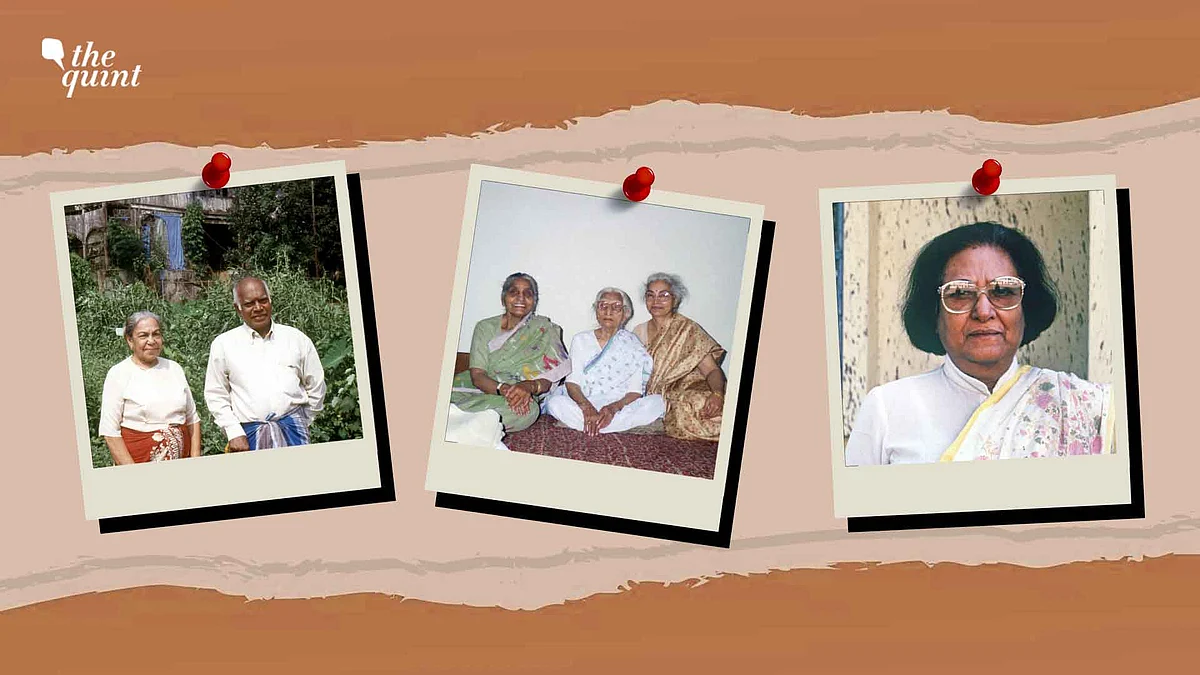Sagari Chhabra’s New Exhibit Recalls Women Missing from History of Independence
The exhibit at IIC Delhi features exiled fighters, INA women, and the stateless in India’s unfinished freedom story.

advertisement
Walking into the exhibition curated by Sagari Chhabra’s Hamaara Itihaas Archives of Freedom Fighters, one is immediately struck not by its grandeur but by intimacy. History here does not posture with monumental gestures; it sits quietly in frames, speaks softly through oral testimonies, and flickers across screens.
The exhibition is open to the public till 23 August 2025 at the Art Gallery, Kamaladevi Complex, India International Centre, New Delhi. The archive, the first and only international initiative with a deliberate emphasis on the unsung and the unrecorded freedom fighters—particularly women—reshapes the very way we remember the struggle for independence.
Drawing from an extensive archive, the exhibition presents oral testimonies, photographs, audio, video, and film recordings collected across India, Malaysia, Singapore, Thailand, and Myanmar. It also showcases documents and photographs from London, Paris, Geneva, Stuttgart, San Francisco, and beyond, highlighting how India’s freedom struggle was simultaneously revolutionary and non-violent, and profoundly international in scope.
"I hope people understand that Independence came at a cost, and that cost needs to be acknowledged," Chhabra told The Quint.
It is this resemblance that collapses the distance between past and present, reminding us that the freedom struggle was not only enacted by distant heroes in textbooks, but also by women whose lives mirrored those of our own families.
Where are the Women?
In its collections, the freedom movement emerges not as a purely national story but as a profoundly transnational one. The curation houses Shyamaji Krishna Varma’s famed periodical Indian Sociologist, photos of Madam Bhikhaiji Cama hoisting the Indian flag on foreign soil for the first time, original copies of fiery publications like Bande Mataram and Talvar, the scattered nodes of the Ghadar Party in San Francisco, Vancouver, and Astoria. Here, too, are testimonies from Yangon and Zeyawaddy, from Geneva and Stuttgart, reminding us how wide the geography of India’s independence truly was.
It was carried, smuggled, and shouted across oceans and continents.
Among the most stirring sections is the focus on Netaji Subhas Chandra Bose’s Indian National Army and its Rani of Jhansi Regiment, led by Lakshmi Swaminathan. With 1,500 women forming one of the world’s earliest all-female regiments, this history is at once inspiring and unsettling. Standing before their photographs, Chhabra’s voice resounds through the gallery, “Look at them, they’re all girls, 16, 17 and they’re ready to fight for the country.”
A member of the regiment, Dr Gouri Sen later came to Delhi and became a gynaecologist. I overheard an elderly woman say to her daughter, "Come, see the woman who delivered you.” It dawned upon me then, that these women weren’t solely defined by their time in the freedom movement either, they moved on and built lives of their own.
Chhabra often asks her audience to pause and reflect. Before one set of testimonies, she says gently,
Momota Mehta, Rani of Jhansi Regiment.
Preeta Jayaraman/Humara Itihaas Archive
The remark is simple but piercing. It draws our attention not just to the act of joining an army, but to the everyday defiance embedded in stepping outside the strictures of gender and tradition. Later, her voice breaks the silence again: “They gave away everything for their country.” The finality of that “everything” settles heavily in the room.
The Ones Left Stateless
But perhaps the most haunting section of the exhibition is the one devoted to those freedom fighters who remain, even now, unacknowledged by the Indian state. Take the case of Lt Perumal — who fought with the INA, yet was left stateless in Myanmar, denied pension, recognition, and belonging. His story is not an exception but emblematic of many others whose sacrifices were erased after independence.
Standing before these testimonies, Chhabra speaks with urgency, her words both indictment and plea,
Mehrunissa (left), Perumal (right), INA Yangon, 2004
Sagari Chhabra/Humara Itihaas Archive
These fighters became living reminders of how nation-states can forget those who built them. Their exclusion from citizenship is not simply a bureaucratic fault but a tragic betrayal that continues across generations, depriving these brave souls’ children and grandchildren of recognition.
Chhabra’s insistence that we deal with this injustice transforms the archive from a space of sombre nostalgia into one of real-time accountability.
The Struggle Remains Unfinished
When I visited on a quiet Monday evening, two groups of visitors stood out: the old and the rather young. That juxtaposition itself seemed to echo the nature of our independence. For the old, the archive offered a space of memory, perhaps of recognition. For the young, it was a site of discovery, a confrontation with a history denied to them in textbooks.
Subhadra Khosla (left), Satyavati (centre), Nirmal Kant (right) - the women who raised the flag inside the Lahore women's jail, 1942.
Sagari Chhabra/Humara Itihaas Archives
The audiovisual section extends this continuity into the present, linking the courage of women in the INA to that of women in more recent movements. Medha Patkar’s voice in the Narmada Bachao Andolan reminds us that resistance has always had women at its centre. The question that lingers is urgent—when we record history whose stories do we choose to tell, and whose do we consign to silence?
Its poignancy lies in refusing triumphalism. Instead, it offers recognition to those whose courage was immense yet unacknowledged, whose sacrifices were foundational yet unrewarded. In the quiet hall of the exhibition, surrounded by faces that could have been my own grandmothers, I was reminded that freedom is not a closed chapter of 1947.
It is a living inheritance, one that demands we remember and honour those who fought without ever being remembered.
(Baibhabi Hazra is a student of History at Lady Shri Ram College for Women and an intern at The Quint.)